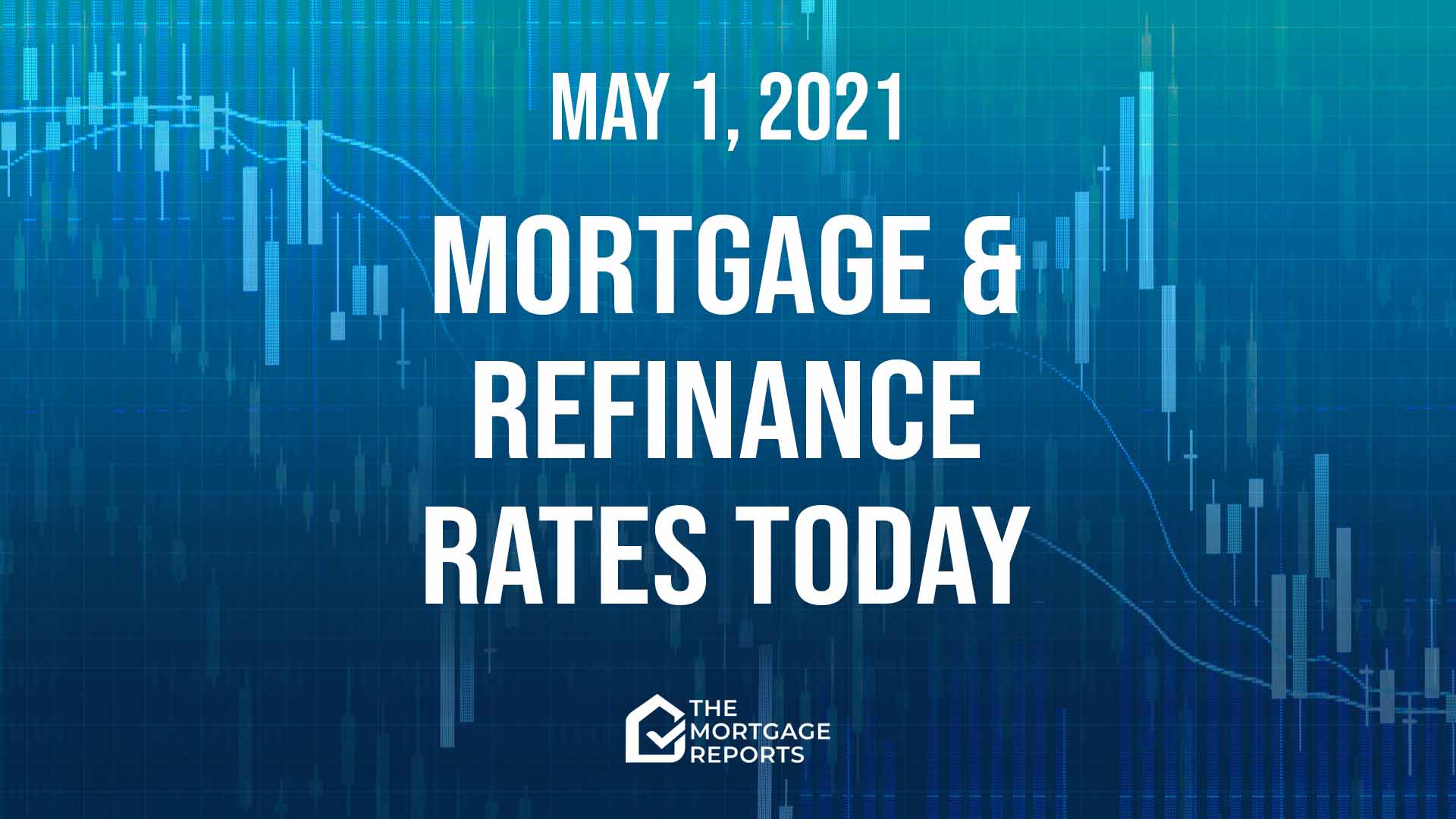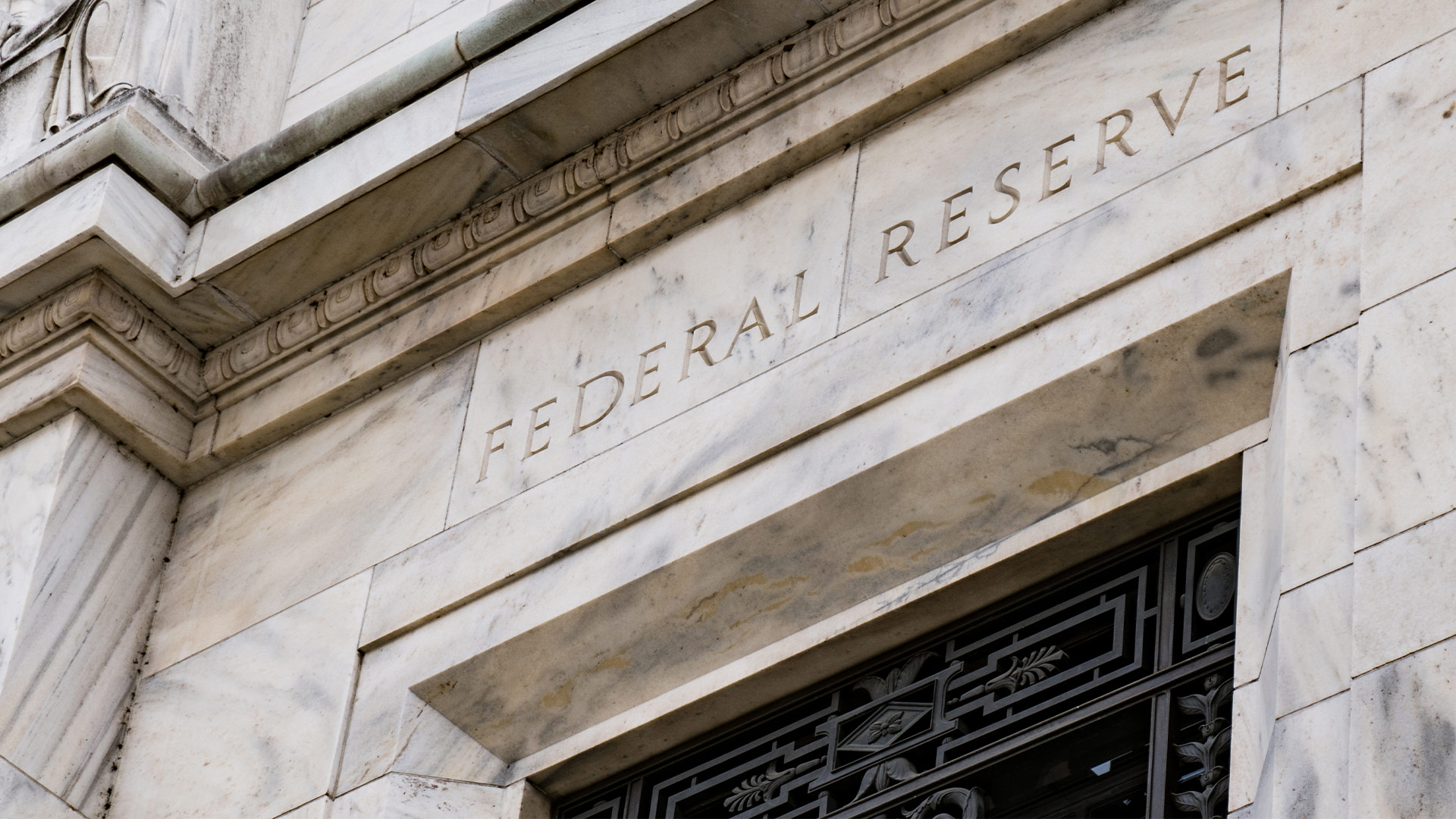
Today’s mortgage and refinance rates
Average mortgage rates edged lower yesterday. In the first half of April, rates fell appreciably. But in the second half, they’ve barely moved.
We’ve been stuck with what one analyst called “market indecision” for the last couple of weeks. And it’s that lack of a decisive direction that’s forcing me to repeat my recent mantra: mortgage rates next week are unpredictable.
Of course, I’m still pretty sure that mortgage rates will resume their upward trend soon. But I don’t know when. Read on for my reasons.
Find and lock a low rate (May 1st, 2021)Current mortgage and refinance rates
| Program | Mortgage Rate | APR* | Change |
|---|---|---|---|
| Conventional 30 year fixed | |||
| Conventional 30 year fixed | 2.985% | 2.99% | -0.01% |
| Conventional 15 year fixed | |||
| Conventional 15 year fixed | 2.188% | 2.305% | -0.06% |
| Conventional 20 year fixed | |||
| Conventional 20 year fixed | 2.75% | 2.842% | Unchanged |
| Conventional 10 year fixed | |||
| Conventional 10 year fixed | 1.823% | 2.004% | -0.04% |
| 30 year fixed FHA | |||
| 30 year fixed FHA | 2.745% | 3.402% | -0.06% |
| 15 year fixed FHA | |||
| 15 year fixed FHA | 2.482% | 3.067% | -0.04% |
| 5 year ARM FHA | |||
| 5 year ARM FHA | 2.5% | 3.201% | Unchanged |
| 30 year fixed VA | |||
| 30 year fixed VA | 2.372% | 2.544% | Unchanged |
| 15 year fixed VA | |||
| 15 year fixed VA | 2.25% | 2.571% | Unchanged |
| 5 year ARM VA | |||
| 5 year ARM VA | 2.5% | 2.379% | Unchanged |
| Rates are provided by our partner network, and may not reflect the market. Your rate might be different. Click here for a personalized rate quote. See our rate assumptions here. | |||
COVID-19 mortgage updates: Mortgage lenders are changing rates and rules due to COVID-19. To see the latest on how coronavirus could impact your home loan, click here.
Should you lock a mortgage rate today?
Just because my recommendations below suggest locking, don’t feel you must take my advice instantly. Yes, I believe mortgage rates will rise again quite soon. But, if you want to take advantage of any further falls, by all means, do so.
However, note that this comes with some risk. Because it’s possible rates will rise quickly once the dam bursts. So call your lender now to make sure it’s ready to lock the moment you decide to do so. And resolve to closely monitor mortgage rates — at least daily.
Still, my overall recommendations remain:
- LOCK if closing in 7 days
- LOCK if closing in 15 days
- LOCK if closing in 30 days
- LOCK if closing in 45 days
- LOCK if closing in 60 days
However, with so much uncertainty at the moment, your instincts could easily turn out to be as good as mine — or better. So be guided by your gut and your personal tolerance for risk.
What’s moving current mortgage rates
I’m still a little mystified about why mortgage rates aren’t moving higher. Just about all the economic data published recently suggests a boom later this year. And booms almost always bring higher rates.
Indeed, many commentators and analysts are upbeat. Earlier in the week, RBC announced that it was “shorting” US Treasurys (laying bets that yields would move higher). And the relationship between mortgage rates and yields on the benchmark 10-year Treasury note is close and long established.
Meanwhile, many others share the positive view behind RBC’s decision. In his weekly newsletter, Robert A. Dye, Ph.D., who’s the chief economist for Comerica Bank, wrote yesterday:
U.S. economic indicators were positive this week, showing a strong expansion of the U.S. economy in Q1, which sets us up for robust overall growth in 2021.
— Comerica Bank Weekly, April 30
Global consultancy McKinsey & Company’s latest survey of executives, also published yesterday, was similarly optimistic:
In our latest McKinsey Global Survey on the economy, executives’ views are as decidedly positive as they were in March — even as the pandemic continues to dwarf other risks to growth. It’s an especially acute risk in India, where the week after the survey was in the field, the number of daily COVID-19 cases set a new world record.
Globally, 73 percent of all respondents believe that conditions in the world economy will improve in the next six months. It’s the largest share to say so all year, while the share of executives expecting worsening conditions has shrunk by more than half in the past three months: 10 percent say so now, down from 23 percent in January.
— McKinsey & Co., “The coronavirus effect on global economic sentiment,” April 30, 2021
Waiting for rises
And yet mortgage rates continue to hold steady when you might expect them to be rising. How come? Well, we’re back to an April 21 quote from The Wall Street Journal that we cited this time last week: “Many investors remain upbeat about the outlook … but are growing concerned that a rise in coronavirus cases globally could delay plans to reopen economic activity.”
For how long can investors ignore the excellent domestic news and focus on tragic events in India and elsewhere abroad? Your guess is as good as mine. But I doubt it will be long.
Economic reports next week
Regular readers will know that markets have been ignoring most economic reports in recent weeks. So the effects of the following may be different from usual:
- Monday — Institute for Supply Management (ISM) manufacturing index for April. Plus March construction spending and April motor vehicle sales
- Wednesday — April ADP (private sector) employment report. Plus April ISM services index
- Thursday — Productivity and unit labor costs for the first quarter of 2021. Plus weekly new claims for unemployment insurance
- Friday — April employment situation report, comprising nonfarm payrolls, unemployment rate and average hourly earnings
That official employment situation report on Friday is by far the most significant on next week’s calendar. Indeed, you could argue that it’s the single most important economic report currently published. But will markets take notice of it?
Find and lock a low rate (May 1st, 2021)
Mortgage interest rates forecast for next week
Yet again, I’m forced to report that mortgage rates are essentially unpredictable at the moment. Luckily, those rates have been becalmed for the last couple of weeks with only small rises and falls. Indeed, according to Mortgage News Daily, if you locked on April 15 you’d on average have had a rate that’s only 4 basis points higher than if you’d locked yesterday. And a basis point is one-hundredth of 1%.
Mortgage and refinance rates usually move in tandem. But note that refinance rates are currently a little higher than those for purchase mortgages. That gap’s likely to remain fairly constant as they change.
Meanwhile, a recent regulatory change has made most mortgages for investment properties and vacation homes more expensive.
How your mortgage interest rate is determined
Mortgage and refinance rates are generally determined by prices in a secondary market (similar to the stock or bond markets) where mortgage-backed securities are traded.
And that’s highly dependent on the economy. So mortgage rates tend to be high when things are going well and low when the economy’s in trouble.
Your part
But you play a big part in determining your own mortgage rate in five ways. You can affect it significantly by:
- Shopping around for your best mortgage rate — They vary widely from lender to lender
- Boosting your credit score — Even a small bump can make a big difference to your rate and payments
- Saving the biggest down payment you can — Lenders like you to have real skin in this game
- Keeping your other borrowing modest — The lower your other monthly commitments, the bigger the mortgage you can afford
- Choosing your mortgage carefully — Are you better off with a conventional, FHA, VA, USDA, jumbo or another loan?
Time spent getting these ducks in a row can see you winning lower rates.
Remember, it’s not just a mortgage rate
Be sure to count all your forthcoming homeownership costs when you’re working out how big a mortgage you can afford. So focus on your “PITI” That’s your Principal (pays down the amount you borrowed), Interest (the price of borrowing), (property) Taxes, and (homeowners) Insurance. Our mortgage calculator can help with these.
Depending on your type of mortgage and the size of your down payment, you may have to pay mortgage insurance, too. And that can easily run into three figures every month.
But there are other potential costs. So you’ll have to pay homeowners association dues if you choose to live somewhere with an HOA. And, wherever you live, you should expect repairs and maintenance costs. There’s no landlord to call when things go wrong!
Finally, you’ll find it hard to forget closing costs. You can see those reflected in the annual percentage rate (APR) you’ll be quoted. Because that effectively spreads them out over your loan’s term, making that higher than your straight mortgage rate.
But you may be able to get help with those closing costs your down payment, especially if you’re a first-time buyer. Read:
Down payment assistance programs in every state for 2021



